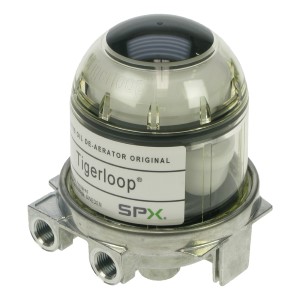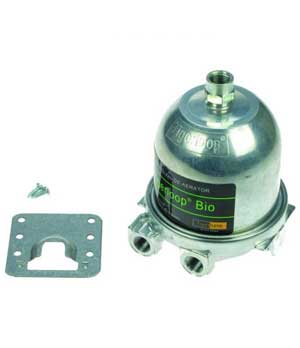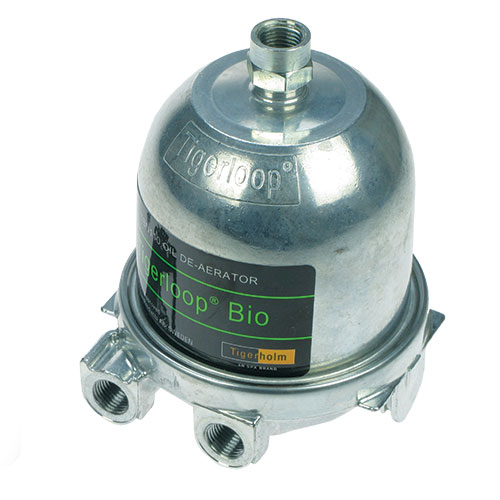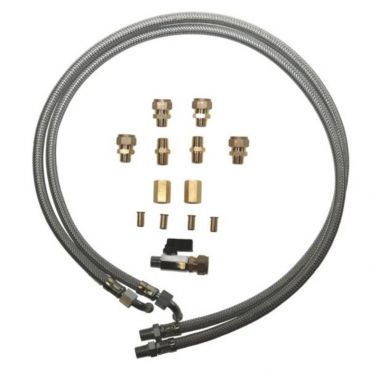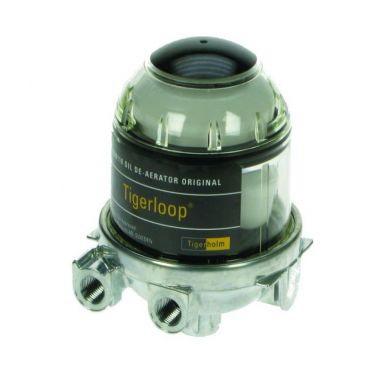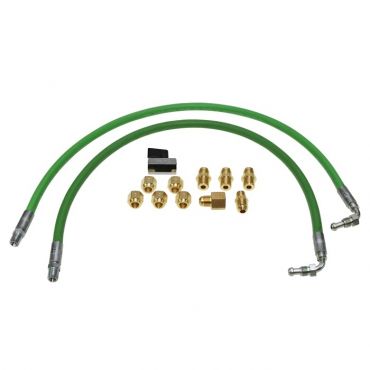Tigerloop Installation Guide
|
UPDATE: Anticipated change to BS 5410-1. All de-aerators whether internally or externally located should be of non-combustible, i.e. metallic construction. |
Anglo Nordic supplies several models of metallic deaerators that meet the new standard. Our external de-aerators range includes the Tigerloop® De-Aerator Bio-Internal and the GOK Oil De-Aerator GS Pro Fi3.
| Product | Tigerloop® De-Aerator Bio-Internal | GOK Oil De-Aerator GS Pro Fi3 |
| Installation Specifications | External (Internal if vent pipe fitted to outside) | External / Internal |
| Warranty | 1 Year | 1 Year |
| Image |
|
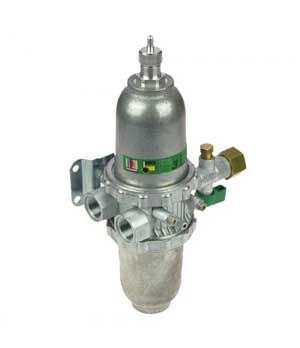
|
| Oil Types |
Kerosene Gas oil Biofuels (to EN 14213 & B100) |
Kerosene C2 (acc. BS 2869) Gas Oil (acc. BS 2869) FAME (acc. EN 14213 or EN 1214) Bio-liquids (acc. OPS24) Diesel (acc. EN 590) |
| Price | £117.23 | £174.38 |
(Please see product pages for full specifications)
| Original Post from 04/03/2019 |
Tigerloop®, made by Tigerholm, is a type of oil de-aerator, a product that removes air bubbles from an oil heating system. If you’re unsure how that works or why it’s beneficial, then this guide is for you. Here we will explain the causes and problems of air in an oil heating system, how a Tigerloop® works to remove air and how that benefits you, how to install a Tigerloop®, and how to clean and troubleshoot a Tigerloop®.
The problem with air
Any oil heating system will consist of a reservoir or tank of oil and a burner, with a suction line between the two to draw oil from the tank into the burner. Oil, like any liquid, will naturally have air dissolved in it and, whenever this oil enters negative pressure, some of the air will be released from the oil as bubbles, much like when you open a bottle of coke and all the carbon dioxide is released as bubbles.
This negative pressure occurs in almost any heating system but is particularly common when higher suction is required, for example, to lift the oil to a higher level, through a long suction line, or through a line that is too coarse for the necessary flow of oil.
Sometimes air enters the system for much more straightforward reasons, though, such as a loose connection or a tank being allowed to run dry. Either way, almost any system will eventually have bubbles of air and other gases form within it. However they form, they then flow with the oil into the pump where they cause breakdowns, soot build-up, wear and tear, and higher consumption of oil.
Two-pipe systems
One way to solve the problem of air and gases in the oil is with a two-pipe system. This has a second, return, line which pumps the separated air along with any unburned oil back to the tank. This is a slight improvement on the one-pipe system and can reduce the build-up of bubbles in the pump, but it comes with problems of its own. To begin with, it doesn’t prevent air bubbles from flowing as far as the nozzle, so an air pocket will still be created between the oil pump and the nozzle. Secondly, a two-pipe system requires a pressurised oil-line leading from the burner back to the tank, and this is a major cause of potential environmental damage as even a tiny leak in a pressurised oil pipe will require considerable clean-up.
So what does Tigerloop® do?
Tigerloop® sits between the oil tank and the burner in an oil heating system, so that all oil passes through it. It continuously and automatically removes air from the oil before passing it to the burner, so that bubble-free oil is burnt, eliminating poor combustion, noise, damage, soot, and smoke.
In that way, Tigerloop® combines the performance of a two-pipe system with the safety and simplicity of a one-pipe system and still does a better job of removing air bubbles than either option.
Are there any alternatives?
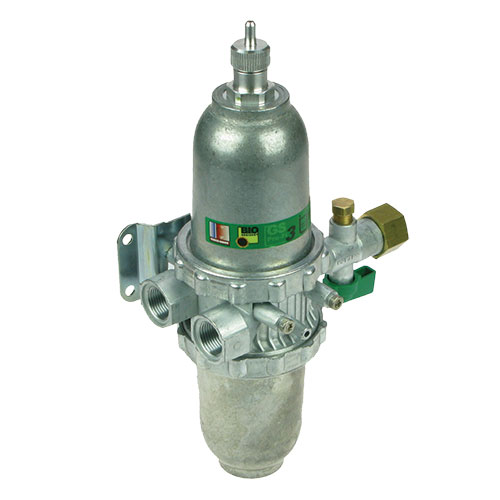
While Tigerloop® is a common de-aeration system, we also stock models from GOK which perform the same function. The GOK models may not feature the famous Tigerloop branding, but we believe they offer a great alternative at a great price-point. If you have any questions about Tigerloop or GOK models, feel free to give our sales staff a call!
What are the benefits?
The obvious benefits of Tigerloop® are a reduction in all the problems that air and gas bubbles cause: Tigerloop®, therefore, provides cleaner and more efficient combustion, reduced damage, less wear and tear, and less soot. It’s also a safer and more environmentally-friendly system and allows for oil tanks to be located below the level of the burner without the issue of oil being made frothy by the negative pressure required to draw up to a raised burner.
Not only that, but because Tigerloop® only requires one pipe between the Tigerloop® and the tank, it is simpler and cheaper to install, and reduces the risk of a damaging and expensive leak. Within Tigerloop® itself is a security chamber with a safety float meaning that even in the event of a failure in the device, it is impossible for oil to leak from it.
Finally, because Tigerloop® constantly recycles unburned oil, de-aerating it and sending it back to the burner, it draws less from the tank and therefore reduces wear on the system.
Do I need a Tigerloop®?
Any light oil burning system will benefit enormously from the installation of a Tigerloop®. Whether it’s a steam boiler, furnace, industrial oven, commercial drier or incinerator, or anywhere else you’re burning oil, installing a Tigerloop® makes your burner more efficient, safe and environmentally friendly as well as ensuring it will last longer and require less maintenance and repair.
Types of Tigerloop®
We offer two types of Tigerloop® depending on your requirements:
The Tigerloop® original is the third generation of the automatic oil de-aerator first developed over 30 years ago. A simple and practical solution, it is designed to be combined with a separate oil filter.
The Tigerloop® Combi adds an integrated oil filter to the basic Tigerloop® original, meaning that everything you need is incorporated in a single package with fewer connections and therefore fewer points of failure or places that could leak. Oil filter inserts can be changed depending on the requirements.
Installing the Tigerloop®
The Tigerloop® should generally be installed as close to the burner as is practical, although it is important not to expose it to temperatures of over 140°F (60°C). Ensure that the Tigerloop® is mounted upright, and use oil resistant lines between the pump and the Tigerloop® OFTEC recommend it should be mounted outside.
To calculate the correct dimension of the feed line you will need to consider pipe resistance, which depends on the length and size of the pipe and oil burner nozzle capacity, and suction head.
Installation should always be performed by a qualified technician familiar with local laws, building codes, and oil heating system installation standards.
Solving problems with the Tigerloop®
Too much foam in the oil de-aerator
This could be caused by a suction leakage, so first check all lines and connections. Alternatively, it may be because the feed line is empty, or the tank is almost empty. Finally, it could be because the burner capacity is too large, in which case you will require a second Tigerloop® installed in parallel.
Noisy Oil Pump
If you are getting noise from the oil pump, this too could be caused by suction leakage, so check your lines and connections. Otherwise, it may be because the suction head is too high.
Oil not being sucked up from the tank
This could be due to the same causes as the noisy oil pump above, so follow those steps first. Finally, it may be because the bypass plug is not installed in the oil pump, so fitting the plug will solve the problem.
De-aerator lower chamber full of oil
This is not actually a problem, but part of the normal functioning of the de-aerator. Under certain conditions, where little to no air or gas is entering the system, the air pocket may slowly disappear and the lower chamber will be completely filled with oil. The air pocket will reappear as more air enters the system under different conditions.
How to clean a Tigerloop®
A Tigerloop® is a completely sealed system that you should not attempt to open, as doing so will destroy the device. All that is required is to occasionally wipe with a dry cloth. You should never clean with any cleaning fluids or alcohol as these will damage the Tigerloop®.
